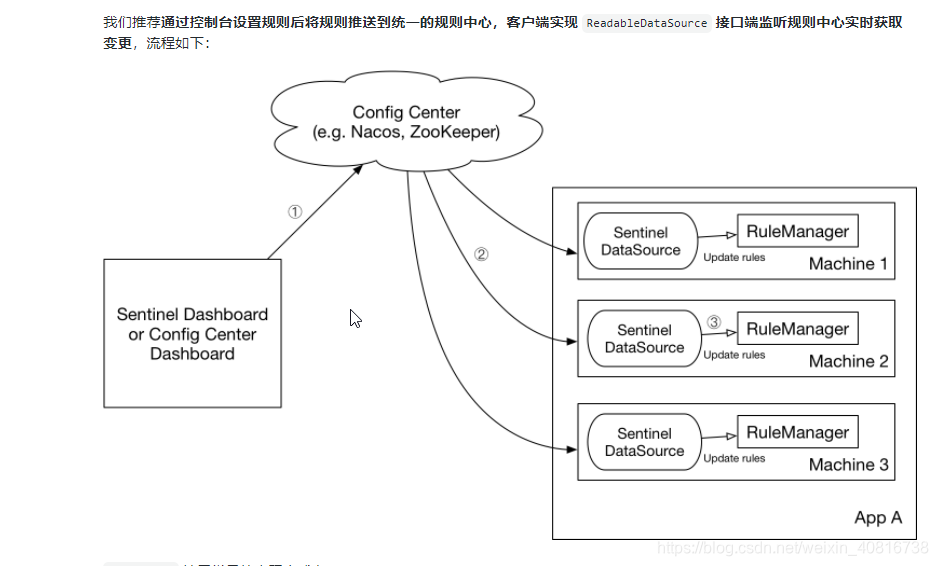
文章目录
- 一、安装zookeeper
- 1. linux环境
- 2. windows环境
- 2. 安装并启动zkui
- 二、编译打包
- 2.1. 拉取项目
- 2.2. 启动
- 2.3. 登录 sentinel
- 2.4. 登录zkui
- 2.5. 重启Sentinel
- 2.6. 删除Sentinel的流控规则
- 三、将客户端和zk打通
- 3.1. 引入依赖
- 3.2. 配置
- 3.3. 启动springboot
- 3.4. sentinel控制台+添加流控规则
- 3.5. 登录zkui
- 四、测试
- 4.1. 请求
- 4.2. 重启springboot项目
- 4.3. Sentinel控制台
- 4.4. zkui
- 4.5. 分布式限流总结
分布式限流 Sentinel+Zookkeper
https://github.com/alibaba/Sentinel/wiki/在生产环境中使用-Sentinel
一、安装zookeeper
1. linux环境
# 正确版本
docker run -p 2181:2181 --restart always -d zookeeper:3.5.8


注:这个zookeeper版本建议使用3.5.8,curator4.x对应zookeeper版本3.5.x
2. windows环境
将zoo_sample.cfg重命名zoo.cfg:

双击启动zk

2. 安装并启动zkui
https://gblfy.blog.csdn.net/article/details/113803594
linux环境:
nohup java -jar zkui-2.0-SNAPSHOT-jar-with-dependencies.jar &
windows环境
java -jar zkui-2.0-SNAPSHOT-jar-with-dependencies.jar >> msg.log


二、编译打包
2.1. 拉取项目
git clone git@github.com:jiajiangnan/Sentinel.git
cd Sentinel
mvn clean install -DskipTests


2.2. 启动
#进入编译后的目录
cd Sentinel-master\Sentinel-master\sentinel-dashboard\target# 第一种(推荐使用):sentinel启动本地连接zk 没任何问题
java -Dserver.port=8080 -Dcsp.sentinel.dashboard.server=localhost:8080 -Dproject.name=sentinel-dashboard -Ddatasource.provider=zookeeper -Ddatasource.provider.zookeeper.server-addr=localhost:2181 -jar sentinel-dashboard-1.8.0-zookeeper.jar
注:jar待补充

2.3. 登录 sentinel
账号/密码:sentinel/sentinel



2.4. 登录zkui

2.5. 重启Sentinel
查看流控规则是否仍然存在

2.6. 删除Sentinel的流控规则
因为流控规则是Sentinel控制台同步zk的,预期效果,在Sentinel控制台删除流控规则后,zk的流控规则也会删除



符合预期
三、将客户端和zk打通
https://github.com/alibaba/Sentinel/wiki/动态规则扩展
3.1. 引入依赖
<dependency><groupId>com.alibaba.csp</groupId><artifactId>sentinel-datasource-zookeeper</artifactId></dependency>
3.2. 配置
package com.gblfy.distributedlimiter.config;import com.alibaba.csp.sentinel.datasource.ReadableDataSource;
import com.alibaba.csp.sentinel.datasource.zookeeper.ZookeeperDataSource;
import com.alibaba.csp.sentinel.slots.block.flow.FlowRule;
import com.alibaba.csp.sentinel.slots.block.flow.FlowRuleManager;
import com.alibaba.fastjson.JSON;
import com.alibaba.fastjson.TypeReference;
import org.springframework.context.annotation.Bean;
import org.springframework.stereotype.Component;import java.util.List;@Component//添加到spring把容器让spring管理
public class ZookeeperDataSourceConfig {@Bean//启动加载此方法public void loadRules() {//zk服务端地址final String remoteAddress = "192.168.43.119:2181";//应用+keyNamefinal String path = "/limiter/sentinel-flow-rules";ReadableDataSource<String, List<FlowRule>> flowRuleDataSource = new ZookeeperDataSource<>(remoteAddress, path,source -> JSON.parseObject(source, new TypeReference<List<FlowRule>>() {}));FlowRuleManager.register2Property(flowRuleDataSource.getProperty());}
}3.3. 启动springboot

3.4. sentinel控制台+添加流控规则


3.5. 登录zkui
查看流控规则是否同步

四、测试
4.1. 请求
请求数量>1,预期会被限流
http://192.xxx.x.xxx:8082/sentinel

4.2. 重启springboot项目
lue
4.3. Sentinel控制台
查看流控规则是否仍然存在

4.4. zkui

4.5. 分布式限流总结
对于是否是分布式限流,明确的就是限流规则是否储存在外部的一个公用的存储中心。之前讲的Guava RateLimiter组件限流为什么不能做不到分布式呢?因为限流规则存在java应用内存里面的。



















